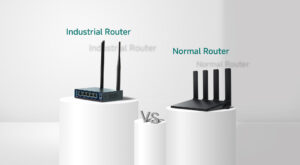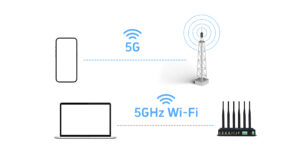As we all know, the term “access point” typically refers to wireless devices that connect devices to a network via Wi-Fi. However, there are some people looking for “outdoor wired access points,” what they want may be devices that can provide wired network connectivity in outdoor environments, a more suitable solution is a network switch designed for outdoor use.
What is a Network Switch for Outdoor Use (or Wired Access Points)?
A network switch for outdoor use is a device designed to connect multiple wired devices to a network in harsh environments. These switches are built to withstand extreme weather conditions, such as rain, dust, and extreme temperatures, making them ideal for installations in parks, campuses, or industrial sites.
- Operating Temperature Range: These switches are designed to operate in harsh environments with a temperature range of -40°C to 75°C, making them suitable for installations in extreme hot or cold conditions.
- Multiple Ports: Network switches for outdoor use often feature a large number of ports, allowing for the connection of multiple devices simultaneously. This includes options for both RJ45 copper ports and SFP/SFP+ fiber ports, offering flexibility in network deployment.
- Power over Ethernet (PoE): Many outdoor switches support PoE, which allows them to power devices like cameras or access points over the Ethernet cable, simplifying installation and reducing the need for separate power sources.
- Advanced Management Features: These switches typically offer advanced management capabilities, including support for VLANs, QoS policies, and port mirroring, which help in managing and securing the network efficiently.
Why Choose Network Switches for Outdoor Use?
Network switches are the preferred choice for outdoor wired connectivity because they offer more ports than routers, allowing multiple devices to connect simultaneously. Unlike access points, which connect devices via Wi-Fi, and routers, which are limited by their port count, network switches can handle a large number of wired connections through copper or fiber cables. Functioning similarly to a hub but with more intelligence, switches efficiently direct data to specific devices, ensuring reliable and efficient network performance in harsh outdoor environments. This makes them perfect for applications requiring extensive wired connectivity, such as powering outdoor cameras or Wi-Fi access points.
Industrial WiFi Switch: Bridging Wired and Wireless Needs Outdoor
Our industrial WiFi network switch is a versatile device designed to integrate the functions of both a network switch and a wireless access point, making it ideal for outdoor applications. This integration allows for both wired and wireless connectivity, providing a comprehensive networking solution for harsh outdoor environments.
Key Features:
Wired Connectivity: Offers multiple Ethernet ports for connecting devices via copper or fiber cables, ensuring reliable high-speed data transmission.
- Wireless Connectivity: Includes access point capabilities to provide Wi-Fi connectivity for devices, supporting standards like 802.11ac. Simultaneous 2.4GHz & 5GHz WiFi for mobile devices and IoT endpoints.
- Industrial Grade: Built to withstand extreme temperatures and environmental conditions, ensuring continuous operation in outdoor settings.
- Advanced Management: Supports features like VLANs, QoS, and IGMP snooping for efficient network management and security.
By combining these functionalities, our industrial WiFi network switch simplifies network deployment and management in outdoor environments, such as parks, campuses, or industrial sites. This integrated solution reduces the need for separate devices, making it more efficient and cost-effective for setting up robust outdoor networks.
Conclusion
While the term “outdoor wired access point” might seem confusing, the actual need is often met by using a network switch designed for outdoor use. These devices provide the necessary wired connectivity and are built to operate reliably in harsh conditions. By understanding the role of network switches for outdoor use, users can better address their networking needs in outdoor environments.


